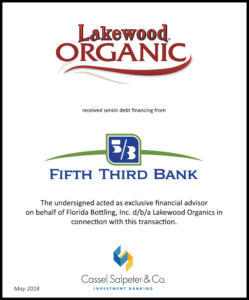By Dale Buss
Everything has fallen into place in the Trump Boom. Now CEOs need to figure out how to exploit today’s prosperity for the long term as well. And they’d better be ready for the good times to end, as they inevitably will.
For now, all systems are go.
Tax cuts and regulation rollbacks—check. Cheap domestic energy—check. Accelerating job creation, including re-engagement of marginal workers— check. Rising incomes—check. Robust consumer confidence—check. Cascading business investment—check. Synchronous improvement in economies around the globe to create demand for U.S. exports—check. Unleashing of pent-up optimism—check. CEOs’ willingness to call a boom a “boom”—check.
The Business Roundtable’s CEO Economic Outlook is at its highest level in history, and small business owners have reported their highest optimism in 35 years. “I don’t remember, ever, a more positive economic environment for the right reasons than what I see right now,” says Robert Chapman, CEO of Barry-Wehmiller, a $3 billion diversified manufacturer of packaging and other goods based in St. Louis. “My board has been predicting an economic downturn for several years now, expecting a normal cycle. But there’s nothing normal going on now. I don’t see any red flags.”
Larry Harding, president of the consultancy division of Chicago-based TMF Group, says, “We’re tending to see the return of animal spirits that have been missing for a long, long time. It sort of feels like a return to that rarefied air of the Reagan years, which is nice.”
But now that they’ve finally arrived at a sort of nirvana perhaps unimaginable during the slow-growth years that followed the Great Recession, two aspects of the boom have CEOs concerned. One is that any of several factors or a combination thereof could bring an unwelcome end to prosperity. The second is their obligation to optimize the opportunities presented by the boom while it lasts.
“We’re going to go through ups and downs, but where will the opportunities be?” says Shahid Khan, CEO of Urbana, Illinois-based Flex-N-Gate, a $6 billion automotive supplier. “It is a great time to get ready for the non-boom ahead. And be ready to take advantage of it by getting people and money resources ready and securing the leverage you have. It’s Business Leadership 101.”
Andy Puzder, former CEO of CKE Restaurants and President Trump’s first nominee for Labor Secretary, urges peers to invest in their businesses. “Investing in new plants and equipment is crucial,” he says. “Use the extra money to grow and create more jobs, then go out and hire the best people by offering competitive salaries and benefits.”
Here are 12 ways that U.S. CEOs are taking advantage of the Trump Boom—or should be:
Believe in It
With so long between true boom times, some younger CEOs could make rookie mistakes by misperceiving the zeitgeist.
“There’s a level of nervousness about this that you didn’t see in 1999 or 2006 and 2007,” says Clarke Murphy, CEO of Russell Reynolds Associates, an advisory and executive search firm.
Today’s younger chiefs, Harding says, “may not be used to seeing the interplay that exists today if they haven’t been a CEO for 20 years. They may see
opportunities that look like they’re really there, and yet they may be hesitant to pull the trigger because they haven’t seen things so favorable before.” Fortunately, he notes, CEOs don’t have to go far to check their views with peers and internally. “People aren’t operating in silos these days,” he says. “There are networking organizations and lots of corroborative opportunities to see what the consensus is.”
Consolidate Gains
Many companies were already investing heavily in their operations and their people as economic growth puttered along over the last eight years. Now the bright-blue horizons give them some room for a breather.
Brembo North America, for instance, scrambled to quintuple its revenues to nearly $1 billion and its employment to about 1,500 people over the last several years by continually adding capacity to supply auto brakes and components.
“That’s a lot of growth and a lot of new people to absorb,” says Dan Sandberg, CEO of the U.S. arm of Italy-based Brembo S.p.A. “We’re going to take all of the inefficiencies left over from our growth, get our house in order and get our systems solidified.”
Diversify the Portfolio
Puzder urges CEOs to “expand your business however possible” during the boom.
David MacNeil is among the CEOs doing just that: The chief of Bolingbrook, Illinois-based WeatherTech, a $500 million maker of customized automotive floor mats, glorified his construction of a huge new factory addition with a Super Bowl commercial in February. It will manufacture a line of stainless- steel pet bowls made to human-safety standards and integrated into plastic mats.
“It’s right in our wheelhouse because we injection-mold many things already,” he says. “And we’re building another factory in America. Isn’t that the right thing to do?”
Acquire Other Companies
M&A activity keeps rising as CEOs look for bargains and synergies that can exploit the boom. Arby’s CEO Paul Brown, for example, bought Buffalo Wild Wings for $2.9 billion in February, and now the renamed “Inspire Brands” aims to buy more chains to protect against consumers losing their appetite for any one type of cuisine.
Meanwhile, Barry-Wehmiller acquired BICMA, a German hygiene technology company, in January for its 100th acquisition. “We did 12 acquisitions last year,” Chapman says. “We continue to find acquisitions around the world, though we’re not in a hurry.”
Reward Employees
Companies continue to spread the benefits of the tax cuts and flush business to their employees long after the initial wave of high-profile actions, such as Apple’s bonuses. SunTrust, for example, has raised its minimum wage to $15 an hour, boosted merit pay for about 20 percent of its workers, made a one-percent additional 401(k) contribution for all workers and offered $1,000 bonuses for those who complete its financial literacy program.
“There’s nothing more important now than retaining your top performers,” says Bill Rogers, CEO of the Atlanta-based financial services giant. “[For] the cost of just one turn of turnover, you can put a lot of money in employees’ pockets.”
There’s another long game at work here for the economy, too, says Puzder, who has codified his bullish views in a new book, The Capitalist Comeback: The Trump Boom and the Left’s Plot to Stop It. “Reward workers with increased compensation to show them that when companies are unshackled from government regulation and taxation and allowed to profit, everyone wins,” he says.
Beef Up R&D
Plant today’s seed corn in new innovation efforts for the best return for the long term, advisers and CEOs say, especially in areas of potentially huge technological returns or disruptions.
“If I’m in an innovation business where I need to constantly reinvent myself or how I manufacture something or need to expand in a unique way, I want to invest in R&D right now,” says Ray Rothrock, CEO of RedSeal, a Sunnyvale, California-based cybersecurity outfit. “If my margins are improving as a result of the tax cuts, I should put that in R&D. It’ll create new, innovative products and jobs and improve your brands. It’s an opportunity that doesn’t come along that often.”
Throw a Bone to Investors
CEOs want to share the fruits of the boom with investors, too, through net earnings, dividend increases and stock buybacks. Buybacks “are a perfectly
legitimate use” of profits for companies that “lack the ideas or the potential to grow,” Puzder says.
But Michael McGuire, CEO of Chicago-based advisory and accounting firm Grant Thornton, cautions that “if you don’t invest for the long term, your business might be for the short term. And if your investors just want you to distribute everything to them, maybe they’re in it for the short term, too.”
Rethink Your Talent Pool
Talent is everything for companies that want to take advantage of favorable business conditions and invest for the future, but the demand for digital skills is running up prices in traditional coastal tech hotbeds.
Consider recruiting outside them, McGuire advises. “For the longest time, people wanted to be in a place like Silicon Valley because they could be around the same kind of people,” he says. “But today’s technology means people can work anywhere.”
Plunge into New Technology
James Cassel, founder of investment banking firm Cassel Salpeter in Coral Gables, Florida, believes that CEOs “should take X amount of hours per week and just sit and think about technology and read about it voraciously.”
Beyond that, McGuire advises CEOs to “overpronate dramatically on investing in technology right now. You may be at a cocktail party where people talk
about disruption, AI, machine learning and blockchain, and you may think your company can do it. But if you don’t have the right tech platform and your data aligned, you can’t.”
Boost Exports
Now that even Brazil has come out of recession, joining Europe’s recovering economy and the simmering cauldron of growth in Asia—and with a relatively low dollar—the boom should encourage more U.S. CEOs to consider or expand exports.
“There are a lot of companies going into Europe now, and we’re not trying to restrain them,” says Harding, the consultant.
“We just want to make sure CEOs understand uncertainties related to Brexit, for example.”
Speak Out
Puzder believes that CEOs can help the boom acquire a self-reinforcing effect “by speaking out about its positive effects. Let people know why things are better, why their compensation is increasing and why the government is taking less out of their paychecks.”
Adapt to Trump
CEOs can brace themselves for future shocks from President Trump on trade wars and other matters but should keep in mind that they’re his No. 1 constituency.
“If you only listen to his rhetoric,” Harding says, “you might just hide in your basement. But so far [Trump’s] rhetoric doesn’t seem to be hurting the reality.”
Click here to view the original article.







